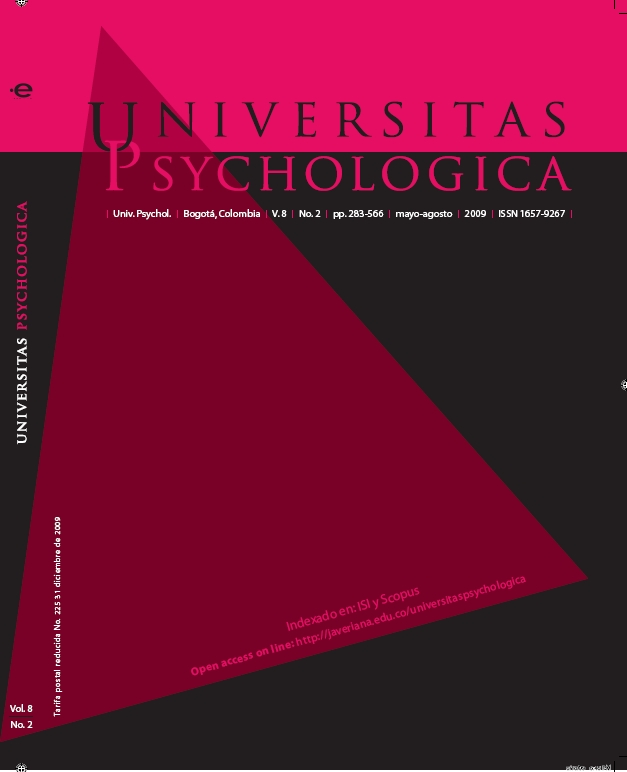Resumen
Las investigaciones sobre burnout se han extendido a diferentes poblaciones, no siendo el caso de las amas de casa; población para la que no se ha detectado un instrumento que mida burnout. Es por lo que los objetivos del presente fueron evaluar las propiedades psicométricas del Cuestionario de burnout para amas de casa (CUBAC), diseñado por los autores con base en el Cuestionario breve de Burnout; además de contrastar el modelo secuencial teórico en que se basa el cuestionario. Los resultados correspondientes a 200 amas de casa reflejan adecuada consistencia interna, estabilidad test-retest en el 31.5% de la muestra, evidencia de validez al comparar con la escala de estrés percibido y un ajuste adecuado del modelo estructural analizadoEsta revista científica se encuentra registrada bajo la licencia Creative Commons Reconocimiento 4.0 Internacional. Por lo tanto, esta obra se puede reproducir, distribuir y comunicar públicamente en formato digital, siempre que se reconozca el nombre de los autores y a la Pontificia Universidad Javeriana. Se permite citar, adaptar, transformar, autoarchivar, republicar y crear a partir del material, para cualquier finalidad (incluso comercial), siempre que se reconozca adecuadamente la autoría, se proporcione un enlace a la obra original y se indique si se han realizado cambios. La Pontificia Universidad Javeriana no retiene los derechos sobre las obras publicadas y los contenidos son responsabilidad exclusiva de los autores, quienes conservan sus derechos morales, intelectuales, de privacidad y publicidad. El aval sobre la intervención de la obra (revisión, corrección de estilo, traducción, diagramación) y su posterior divulgación se otorga mediante una licencia de uso y no a través de una cesión de derechos, lo que representa que la revista y la Pontificia Universidad Javeriana se eximen de cualquier responsabilidad que se pueda derivar de una mala práctica ética por parte de los autores. En consecuencia de la protección brindada por la licencia de uso, la revista no se encuentra en la obligación de publicar retractaciones o modificar la información ya publicada, a no ser que la errata surja del proceso de gestión editorial. La publicación de contenidos en esta revista no representa regalías para los contribuyentes.


